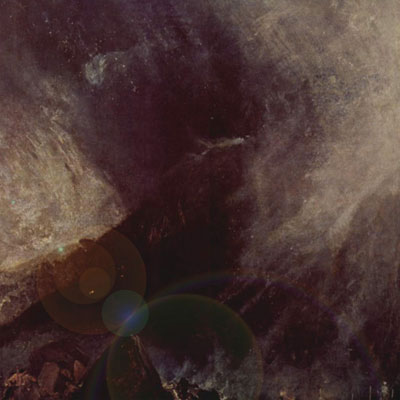 …so there’s a thing with a lot of musical vaguely designated as ‘classical’ where the descriptions don’t per se tell you a great deal. ‘Pounding kraut vibes’ tells you most of what you need to know about a record but “ a palindromic movement structure, the quartet moves through a cycle of compositional styles from diatonic tonal material, to atonal, lyrical writing, to twelve-tone, micro-tonal, and indeterminate materials” doesn’t imply a great deal. It describes some generic ideas about writing music (as in pen-to-stave) but not a great deal about the content. Atonal and twelve-tone have glaring connotations of modernism but there’s a world between (say) Schoenberg and Webern, let alone composers at most of a century’s remove who are better known for something closer to rock music (though Patrick Higgins‘ work in Zs is much more adroit than ‘rock’ might imply).
…so there’s a thing with a lot of musical vaguely designated as ‘classical’ where the descriptions don’t per se tell you a great deal. ‘Pounding kraut vibes’ tells you most of what you need to know about a record but “ a palindromic movement structure, the quartet moves through a cycle of compositional styles from diatonic tonal material, to atonal, lyrical writing, to twelve-tone, micro-tonal, and indeterminate materials” doesn’t imply a great deal. It describes some generic ideas about writing music (as in pen-to-stave) but not a great deal about the content. Atonal and twelve-tone have glaring connotations of modernism but there’s a world between (say) Schoenberg and Webern, let alone composers at most of a century’s remove who are better known for something closer to rock music (though Patrick Higgins‘ work in Zs is much more adroit than ‘rock’ might imply).
Which gets us no closer to the music. The point being that there’s a danger to using just descriptive terms because you can throw all the music theory you like at a piece and still produce a career of mawkish shite (hello, Phillip Glass). Not so here though.
Initially, there’s the suggestion that Higgins has transcribed a fairly wide chordal pattern onto a string quartet. It’s not something that gives up its sophistication too quickly – the first 15 minutes or so sound all string quartety, nothing too far into the realms of tricky or horror chords – establish a theme, have some mild deviations, return to the theme. “Envelopment” (third track) plays about with the established theme but starts to tweak about at it a bit, moving away from the established rhythm and structure but only so far – little pizzicato deviations, some broad cello sections and a small twist of the dissonance knob. The idea, it seems, is to be pretty delicate with the distending effects – by the time the more complex stuff kicks in (“Deviation,” track 4) – all on-the-bridge bowing and cross-rhythms, cello thwacks and wobbly descending scales – there’s no sense that it’s an interruption but an extended collapsing of the main theme.
By the time a fractured version of the thematic material returns, it’s blistered in those tight insecty intervals. From there we get into the stuff that really flicks my switches – all off scratches and flautando bowing, non-horizontal bowing, creaking door sounds and loads of quiet space between notes. Penultimate track “Return” does a good job of veering into minimalist territory – in as far as there’s an extended section of octave (or there about) rhythmic variations (so no melody) which is slowly, carefully built into a frozen version of the chordal theme, now less recognisable and bloody with bowing dynamics. For a closer we get a kind of pizzy recapitulation, now with only sporadic interventions of common rhythm and a scalar closing section which goes a bit Messiaen in its parallel runs.So I’d normally cut a lot of that sort of description out of these reviews – it’s not immediately engaging. But I also have a bit of a zeal/ots drive with stuff from the ‘classical’ realms – it’s a desperate shame that it’s still something that’s intimidating, even to most experimentally types. But there’s another point – given the outlay and ideas, Higgins could so easily have done a tour-of-the-20th-century in quartet form – start with the trad stuff and move into Cage. What he actually does is apply different filters (if you will) to the thematic material in a narrative that’s more about continual variation on the initial theme – so the minimalism isn’t straight-up, it’s shot with a tint of the kind of octave thinking that links Bartok with microtonal sorts; the indeterminism is still apparently thematic, with keys popping up through the ‘out’ techniques; the microtonal aspect isn’t solely jarring and deliberately discordant but more about melting the established tonality.
Long and the short is that it’s a seriously well delivered set of ideas, with a lot more emphasis on taste applied to the given thematic material, rather than being programmatic or systematic about breaking established form with juxtapositions. In which sense, much more ‘now’ than the period historically associated with the ‘avant-garde’.We also get a remix of sorts, Glacia, which is perhaps closer to standard Freq fare – it’s Higgins using and distorting the material again with a laptop. There’s not much in the way of big silly effects or jarring patches, but rather an alternative mixing of the material. Reminds me a lot of Nurse with Wound‘s “…defective tape machine…,” woozy and distressing cuts and more ostentatiously buggering about with the material. Following the quite dense-with-ideas Quartet No 2, it’s a strangely relieving affair – somehow the apparent skittish centrelessness of it feels like a warm bed; plus the tones start really straining under some discrete bending, showing up the fragility of the tonal drive of the earlier piece.
Sorry, I’ve gone on a bit here – in short, it’s a cracker, dense with ideas and delivery and gleefully short on the precociousness.
-Kev Nickells-


